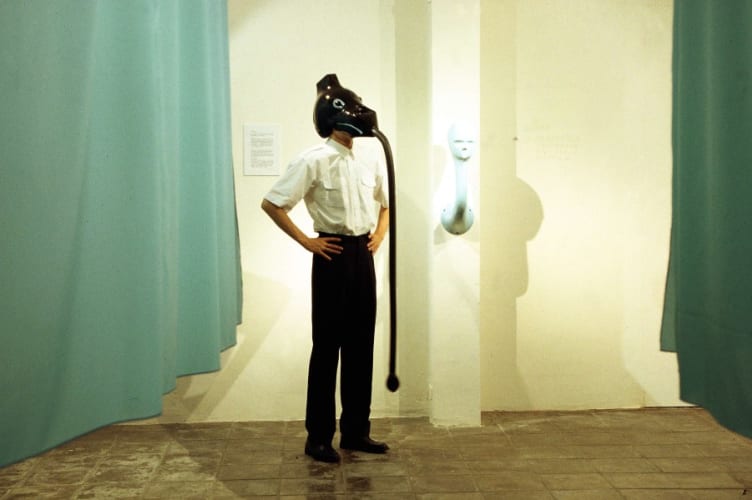One-Eye-Ball, 1999
Hong Kong 2016

Chi-Wen Gallery
Video/Film
Surveillance Camera, LCD Monitor, Fiber Glass
41.0 x 181.0 x 33.0 (cm)
16.1 x 71.3 x 13.0 (inch)
Peng Hung-Chih (b.1969) currently lives and works in Taipei and Beijing. The work of Peng Hung-Chih spans installation, video, painting and sculpture, incorporating elements of art, religion and humanity as a way to explore contemporary culture and reflect upon history. In his early works, dogs are the recurring themes and play a crucial role in the conceptualizations of a spiritual world. In the series of works entitled Canine Monk, Peng’s dog literally steps in the artist’s place as the creator, writing texts from religious scriptures on the wall. The most trusted companion of human beings is elevated to a performing subject, therefore replacing its human counterpart. Using different mediums and unique subjects to convey various artistic concepts, Peng forms an artistic style imbued with personal aesthetic properties. Peng has also participated in major international group shows such as the 2nd Fukuoka Triennale, Fukuoka Asian Art Museum, Japan (2002), the 10th International Istanbul Biennial, Istanbul (2007), In Between - Asian Video Art Weekend, Mori Art Museum, Tokyo (2008) and Moving Image in China 1988 - 2011, Minsheng Art Museum, Shanghai (2011).